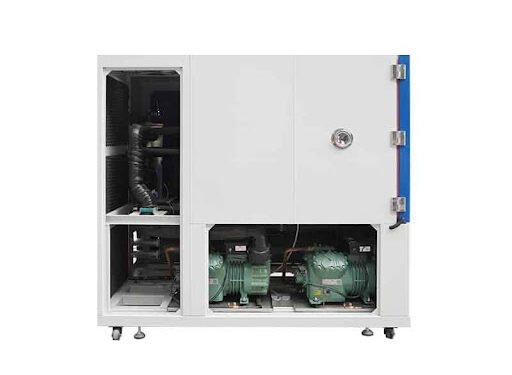Last Updated on December 6, 2023 by Flavia Calina
Environmental test chambers are versatile tools used in various industries to evaluate the performance and durability of products under different environmental conditions. These chambers provide a controlled environment, allowing manufacturers to simulate real-world scenarios and assess product reliability. In this article, we will explore some of the common applications of environmental test chambers across different industries and how they contribute to product development and quality assurance processes.
-
Aerospace and Defense:
The aerospace and defense industry heavily relies on environmental test chambers to assess the performance of components and systems under extreme conditions. For example, chambers can simulate high altitudes, temperature variations, and vibrations experienced during aerospace missions. These tests ensure that components such as electronic systems, materials, and structures can withstand the demanding environment they will encounter during flight, ensuring safety and reliability.
-
Automotive:
Environmental test chambers play a vital role in the automotive industry for evaluating the performance and durability of vehicles and their components. Automotive manufacturers subject their vehicles to various environmental tests, including temperature cycling, exposure to corrosive substances, and humidity. By replicating different climate conditions, test chambers help identify potential weaknesses in vehicle systems, such as engines, electronics, and materials, and ensure they can withstand the diverse environments where automobiles are operated.
-
Electronics and Telecommunications:
The electronics and telecommunications industry extensively utilizes environmental test chambers to evaluate electronic devices’ performance and reliability. These chambers can simulate temperature extremes, humidity, and temperature cycling to test the devices’ ability to operate under harsh conditions. Environmental testing helps identify potential failures, such as thermal stress and moisture ingress, ensuring the electronic devices can withstand real-world environmental challenges and perform optimally.
-
Pharmaceutical and Medical:
In the pharmaceutical and medical industries, environmental test chambers are used for testing the stability and shelf-life of drugs, vaccines, and medical devices. These chambers are equipped with precise temperature and humidity control systems that enable manufacturers to replicate storage conditions. By subjecting pharmaceutical products and medical devices to various temperature and humidity profiles, environmental test chambers facilitate accelerated aging studies, ensuring that these products remain effective and safe for consumers.
-
Energy and Renewable Resources:
Environmental test chambers have become indispensable in the energy sector, particularly in the testing of solar panels and batteries. Test chambers can accurately simulate different temperature profiles, sunlight intensity, and humidity to evaluate the performance and reliability of solar panels. For batteries, these chambers can recreate temperature conditions to assess the battery’s capacity, cycle life, and thermal stability. Environmental testing in the energy and renewable resources industry helps ensure the efficiency and longevity of these crucial technologies.
-
Consumer Goods:
Environmental test chambers find widespread use in the consumer goods industry for evaluating the performance and durability of a wide range of products. These may include household appliances, lighting fixtures, furniture, textiles, and packaging materials. By subjecting these products to various environmental conditions, such as temperature, humidity, and mechanical stress, test chambers help manufacturers identify potential issues and make design improvements. Environmental testing plays a crucial role in ensuring consumer safety and satisfaction.
Conclusion:
Environmental test chambers play a vital role in numerous industries, allowing manufacturers to evaluate product performance, reliability, and durability under different environmental conditions. From aerospace and automotive sectors to electronics, pharmaceuticals, energy, and consumer goods industries, these chambers ensure product quality, safety, and compliance with industry standards. By simulating real-world scenarios, environmental test chambers provide valuable insights that contribute to improving product design, reducing failures, and enhancing customer satisfaction. The continuous development and utilization of environmental test chambers across industries foster innovation and enable manufacturers to develop reliable products that withstand diverse environmental challenges.
Also Read Interesting Articles At: Today World Info.









